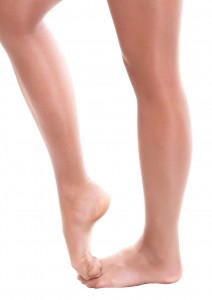 Overview
Overview
The legs, which are the largest limbs in the body, are also some of the most noticeable, especially when wearing revealing clothes. But unless a person is wearing swimwear, or lingerie, not the whole leg will be visible. Thighs are usually out of sight, leaving only the lower part of the legs, the calves, to be seen.
And when the calves look small and thin, especially in relation to the size of the rest of the body, it can have an unattractive appearance, and can even give the impression of poor health and well-being. And when disproportionate calves happen because of disease or injury, the effects can be much worse. Which is why the procedure called calf lift is available, to fix these problems.
What is a calf lift?
The calf lift is a procedure that aims to improve the shape, provide symmetry, and enhance the overall appearance and functionality of the calves through surgery and calf implants. This is done because of a variety of reasons.
First, it improves the person’s lower body’s appearance, giving the legs proper symmetry, shape, and tone. Secondly, it gives convenience to people who wish to achieve a toned body because, unlike most muscles, the calves take more effort to shape and enlarge. So, for people who have small calves who are having a hard time increasing their bulk through exercise, the calf lift can greatly help.
The Calf Lift Procedure
Patients first need to consult with a surgeon, who will take the proper measurements, assess the patient’s health, and come up with the right approach and implants to achieve the patient’s goals. Calf implants are then ordered and prepared for surgery. This needs time, so the initial consultation usually happens about a week or two before the actual surgery.
On surgery day, the patient is given general anesthesia, and made to lie down, abdomen facing the surgery table. The surgeon makes the necessary incisions through the fascia, a fibrous region surrounding the muscle, and, using an instrument, makes the necessary space in order to insert the calf implants.
The surgeon then makes sure that the implants are firmly in place, and once it is assessed that the desired look has been achieved, the doctor closes the incisions and the patient’s surgery is complete.
Risks, Possible Complications, and Recovery Time
There are many inherent risks in any plastic surgery procedure, and the calf lift is no exception. Infection and swelling are ever-present risks, especially if the incisions haven’t been thoroughly cleaned, or if the patient fails to take the prescribed antibiotics on a regular basis. The risk of reopening the incisions is also present.
If the patient is too quick to use the legs, and applies unnecessary stress before incisions have fully healed, then the stitches can break open and cause bleeding. Also, improperly secured calf implants can shift out of place, causing an asymmetrical look and requiring further surgery to correct.
Recovery time for calf lifts can take anywhere between one week before short distance walking is possible, to one month before swelling and skin stretching will subside.
